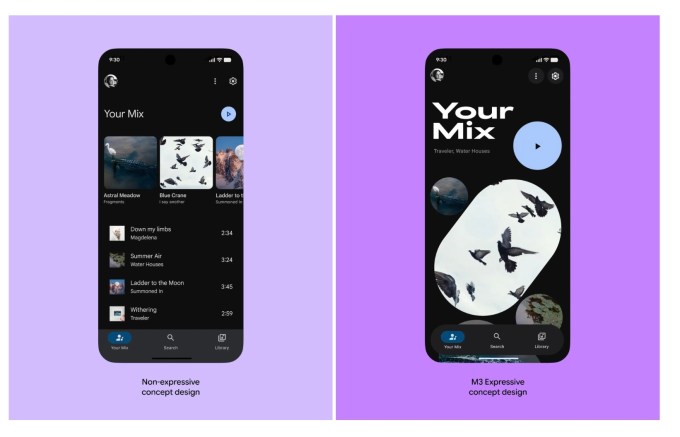Google will reveal a new version of its Android design language in its next conference on Google I/O developers, according to a program of events published on its website and a Google blog post accidentally published. The I/O session title suggests significant changes in the shop for the Android design system, which will evolve from “Material 3” to “Material Design 3 Expression”. The leaked blog post indicates that Google updated design will focus on the creation of interfaces that “connect with people emotional”.
Updates of the design system like this influence the way the app developers are built for the platform and personalize their experiences for users, influencing the general feeling of what it means to use an Android device.
While it is still known on the details of how the material 3 expressive material will be implemented, the blog post offered some high -level details, such as the way the new system is characterized by “bold use of form and color, creating delicious user experiences”.
Introduced for the first time in 2014, Material Design is the Google Open Source design system that describes in detail how to create user interfaces for Android applications, also in areas such as Visual, Motion and Interaction Design. The next largest system update was revealed in May 2021 as “material Tu” (also known as material 3), offering an adaptive interface that allowed users to customize the Android interface in new ways. For example, if you have updated your Android background, the entire Android experience would also update to combine its color combination.
Material 3 expressive may not be such a great revision, but an iteration on the material that the language.
The leaked blog post focused more on the research and the reasoning at the base of the update, noting how people tended to prefer a more expressive design that improves usability when studied. This type of design attracts attention to key elements and important user actions, observed Google, leading to “significant earnings in performance”.
It should be noted that the company has said that this type of design simplifies the use of apps for older adults, essentially leveling the playing field for users of all ages.
Techcrunch event
Berkeley, ca.
|
June 5th
Book now
However, Google stressed that expressive design is not necessarily a “unique solution” and the different apps of apps will still have to respect other models and well -consolidated design standards when they customize the interface of your app.

Google’s blog post was identified for the first time by 9to5google and has since been saved by the Wayback machine. Although the company has quickly knocked down the post, the i/o session entitled “Build UX of the following level with material 3 expressive” exhibition that Google is ready to reveal the design system updated at the end of this month at its conference on developers.
According to the description of the session, the I/O developers will learn to use “new emotional design models” to increase the involvement, usability and desire for their product. The company also plans to share files and alpha code at that moment, so that developers can start experimenting with changes in view of a public version.



